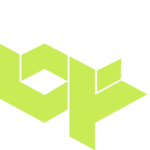MULTI-FACTOR AUTHENTICATION
EASY ACCESS
For Your Workforce
Multifactor authentication is a layered approach to securing data and applications where a system requires a user to present a combination of two or more credentials to verify a user’s identity for login. MFA increases security because even if one credential becomes compromised, unauthorized users will be unable to meet the second authentication requirement and will not be able to access the targeted physical space, computing device, network, or database.
How Does Multi-Factor
Authentication Work?
MFA requires means of verification that unauthorized users won’t have. Since passwords are insufficient for verifying identity, MFA requires multiple pieces of evidence to verify identity. The most common variant of MFA is two-factor authentication (2FA). The theory is that even if threat actors can impersonate a user with one piece of evidence, they won’t be able to provide two or more.
Proper multi-factor authentication uses factors from at least two different categories. Using two from the same category does not fulfill the objective of MFA. Despite wide use of the password/security question combination, both factors are from the knowledge category–and don’t qualify as MFA. A password and a temporary passcode qualify because the passcode is a possession factor, verifying ownership of a specific email account or mobile device.
Benefits of Multi-Factor Authentication
Improved
Trust
The costs of hacking and phishing attacks can be high. Because MFA helps secure systems against unauthorized users–and their associated threats–the organization is more secure overall.
If organizations are hesitant to ask users to comply with tighter security, they should consider that users themselves–especially customers–may appreciate the extra security for their data. When customers trust a vendor’s security protections, they are more likely to trust the organization overall, which means MFA becomes an important competitive advantage.
Reduced
Costs
Successful defenses against attacks can provide a return on investment that covers the expense of an MFA solution–for example, preventing a costly and damaging attack on network resources. Even without preventing attacks, MFA can save organizations money by allowing IT departments to deploy resources to protect other parts of networks from different threats.
Easier
Logins
As multi-factor authentication technology advances, making greater use of passive methods like biometrics and software tokens, it becomes more user-friendly. Easy-to-use MFA processes help users log in more quickly, so workers can be more productive.
In e-commerce, login problems can mean lost sales. User-friendly MFA processes that improve the user experience can help customers log in and, therefore, purchase products.

